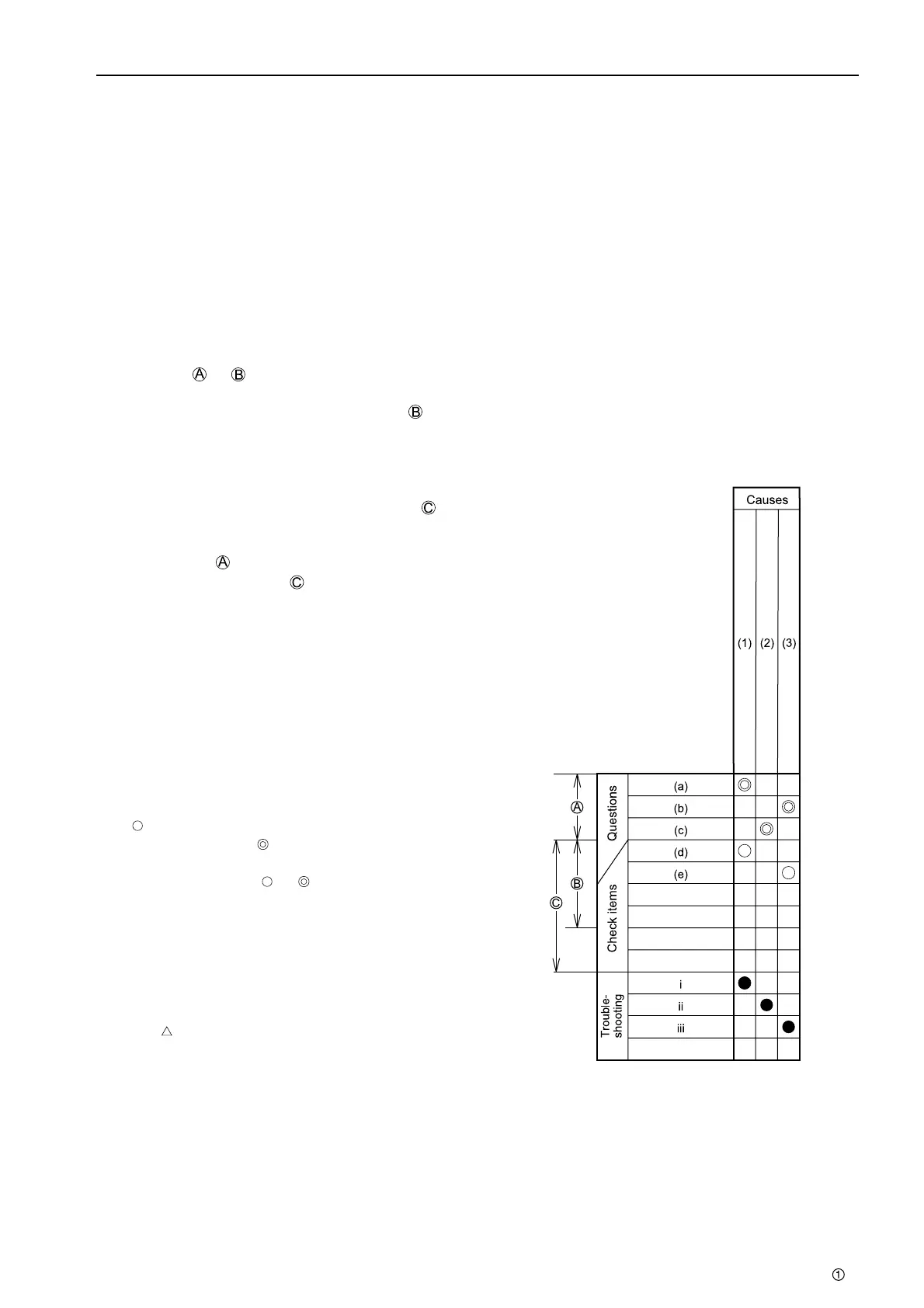140-3 SERIES
12-103
TROUBLESHOOTING METHOD OF USING TROUBLESHOOTING CHARTS
METHOD OF USING TROUBLESHOOTING CHARTS
This troubleshooting chart is divided into three sec-
tions:
questions, check items, and troubleshoot-
ing
. The questions and check items are used to
pinpoint high probability causes that can be located
from the failure symptoms or simple inspeciton with-
out using troubleshooting tools.
Next, troubleshooting tools or direct inspection are
used to check the high probability causes to make
final confirmation.
[Questions]
Sections + in the chart on the right corre-
sponds to the items where answers can be
obtained from the user. The items in are
items that can be obtained from the user,
depending on the user
'
s level.
[Check items]
The serviceman carries out simple inspection to
narrow down the causes. The items under in
the chart on the right correspond to this.
The serviceman narrows down the causes from
information that he has obtained from the
user and the results of that he has obtained
from his own inspection.
[Troubleshooting]
Troubleshooting is carried out in the order of
probability, starting with the causes that have
been marked as having the highest probability
from information gained from
[Questions]
and
[Check items]
.
The basic method of using the troubleshooting chart
is as follows.
Items listed for
[Questions]
and
[Check items]
that
have a relationship with the Cause items are marked
with , and of these, causes that have a high prob-
ability are marked with .
Check each of the
[Questions]
and
[Check items]
in turn, and marked the or in the chart for items
where the problem appeared. The vertical column
(Causes) that has the highest number of points is
the most probable cause, so start troubleshooting
for that item to make final confirmation of the cause.
As a rule, do not use it when calculating the points
for locating the cause, but it can be included if nec-
essary to determine the order for troubleshooting.
Use the in the Cause column as reference for
[Degree of use (Operated for long period)]
in the
[Questions]
section as reference.

